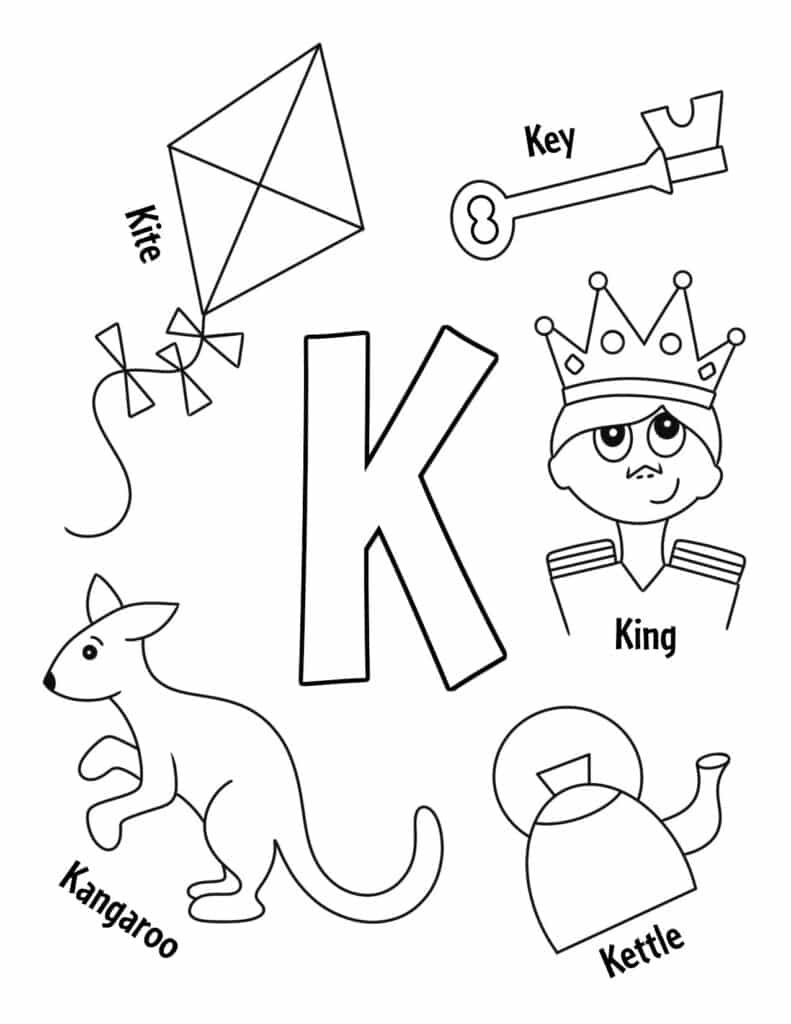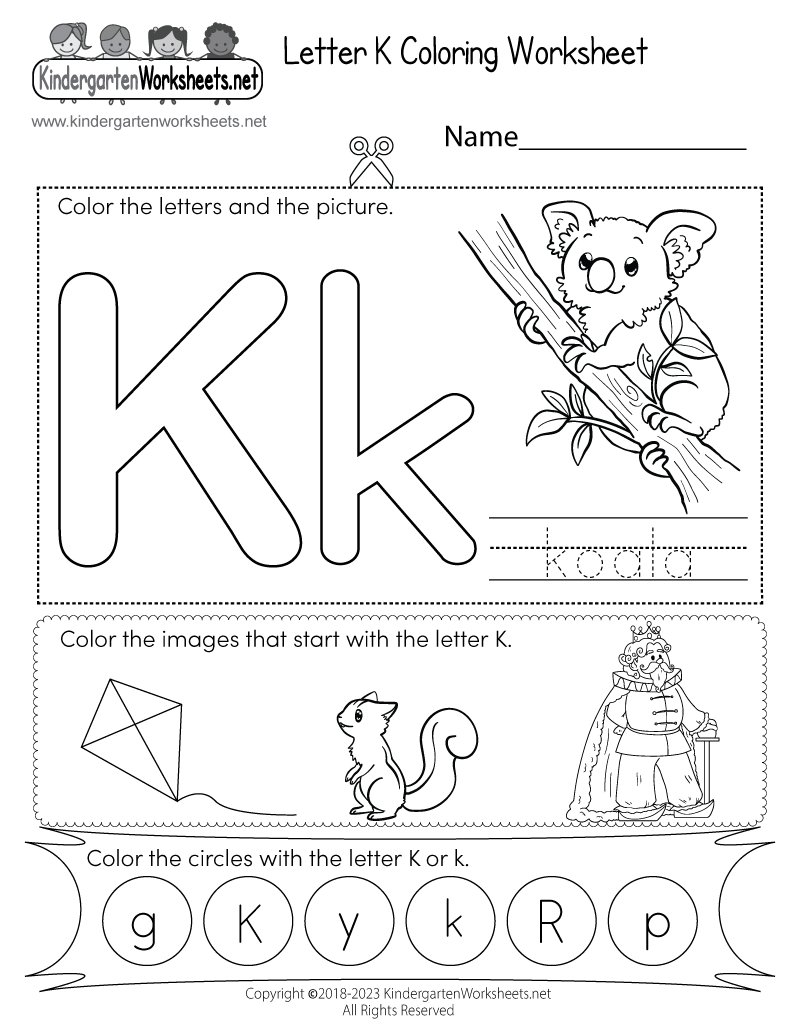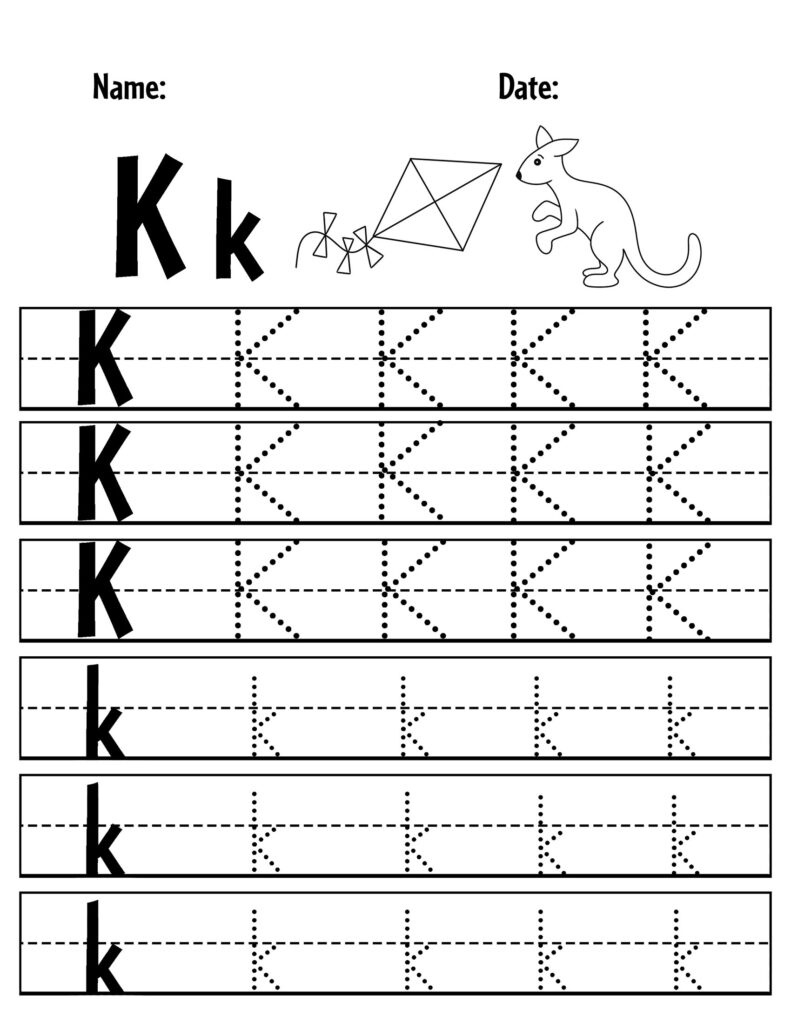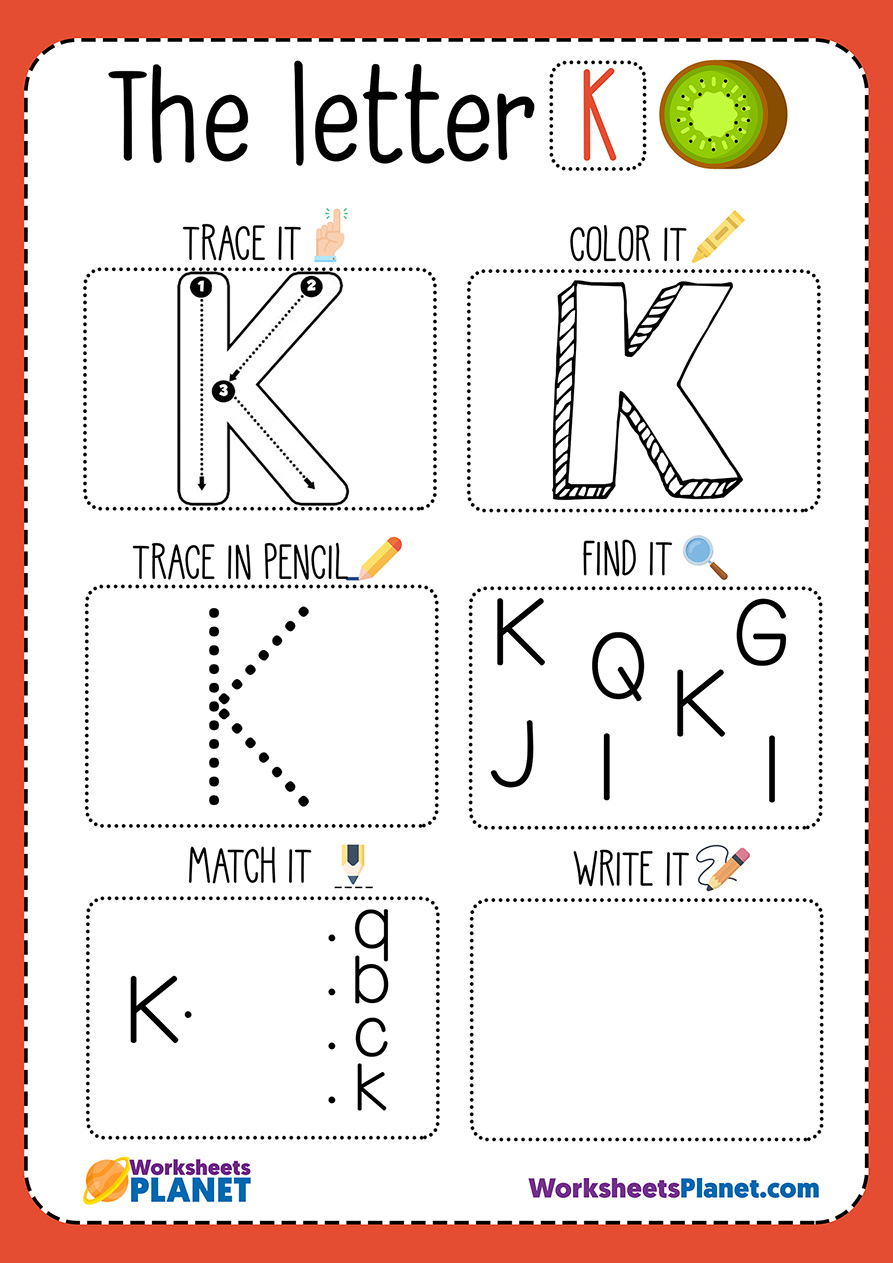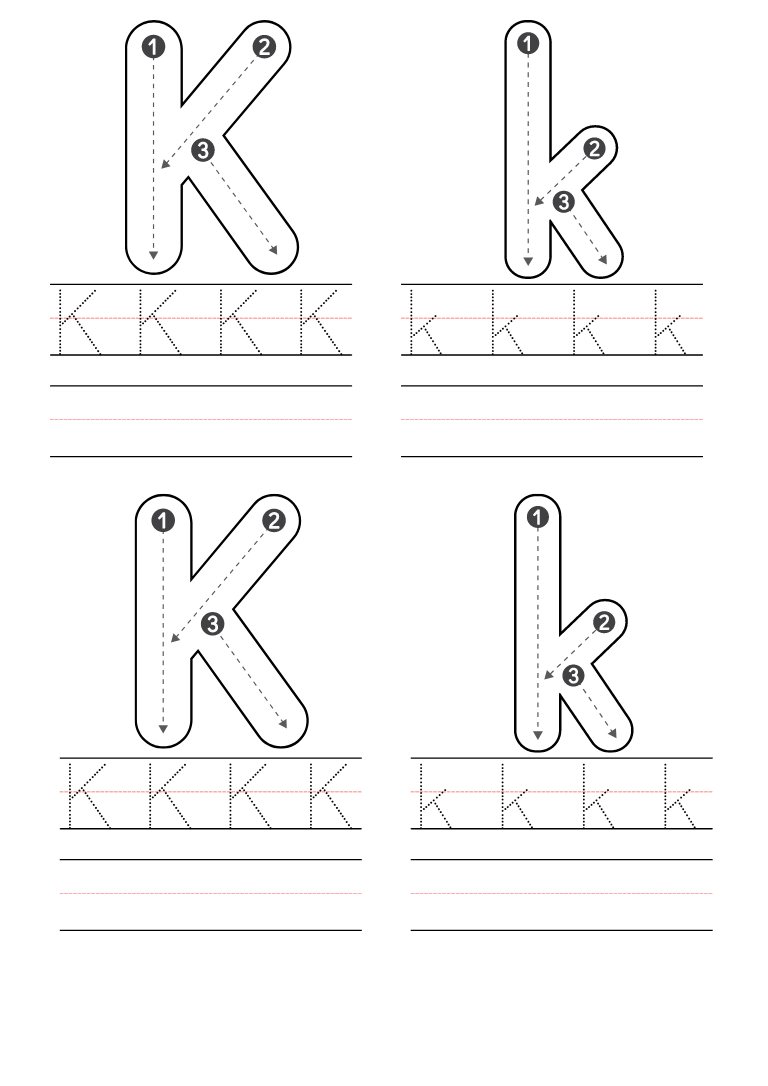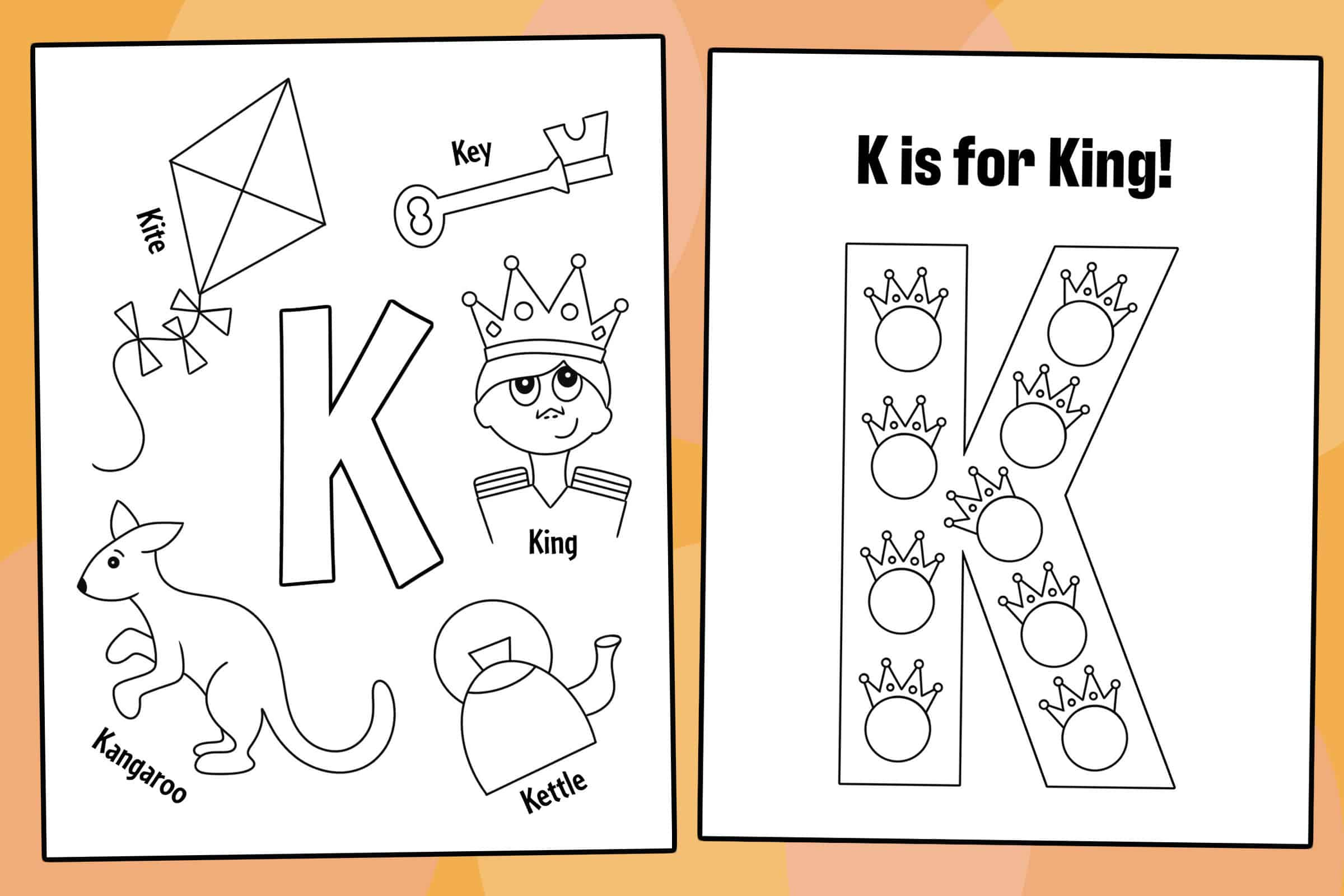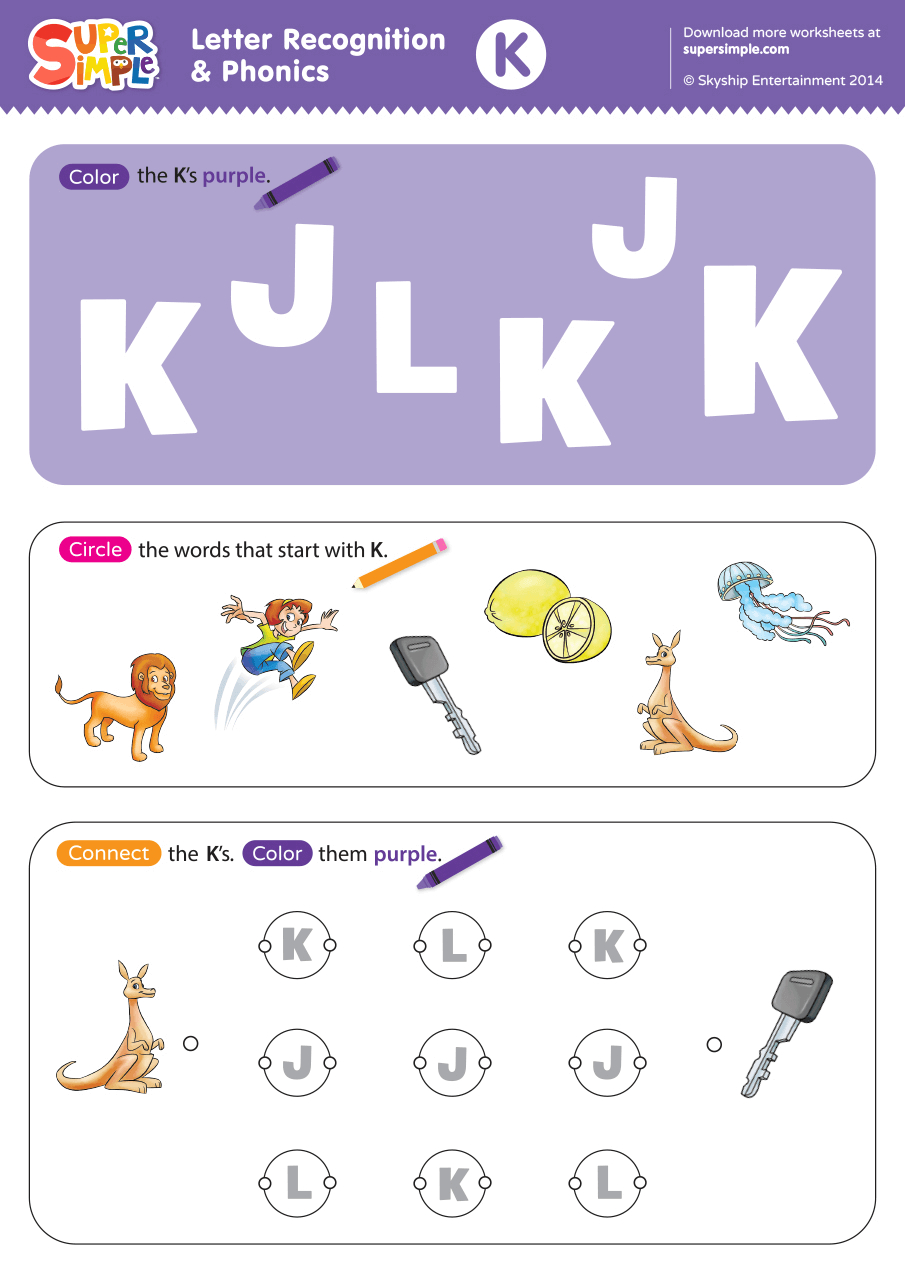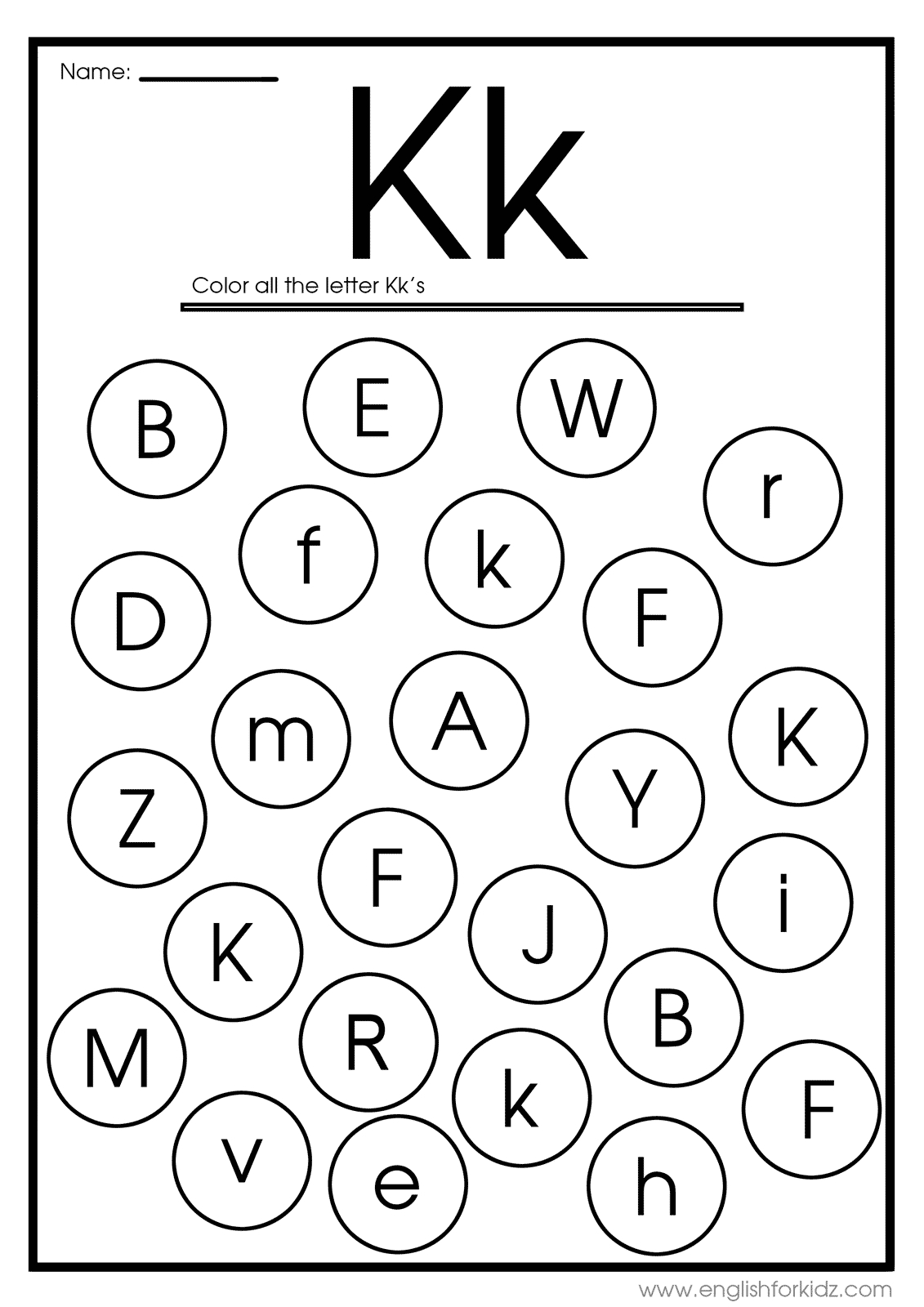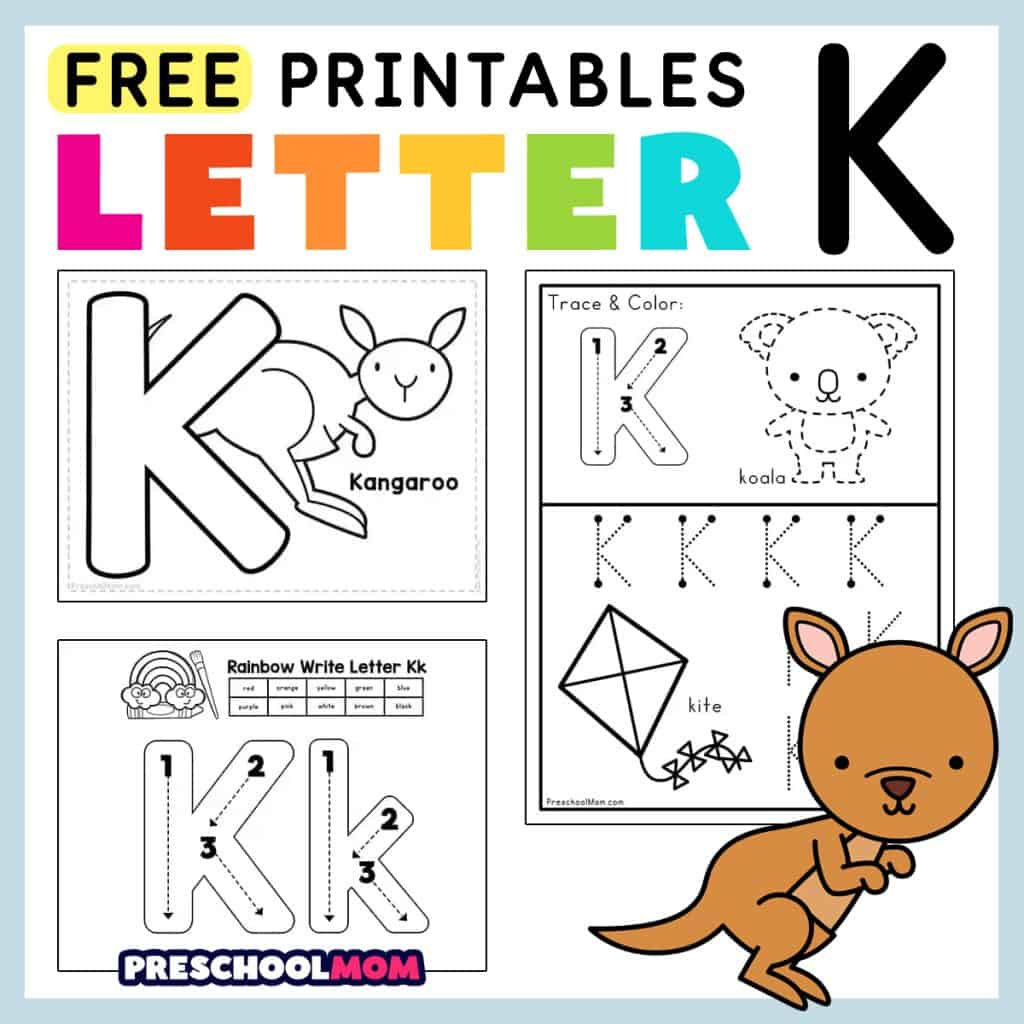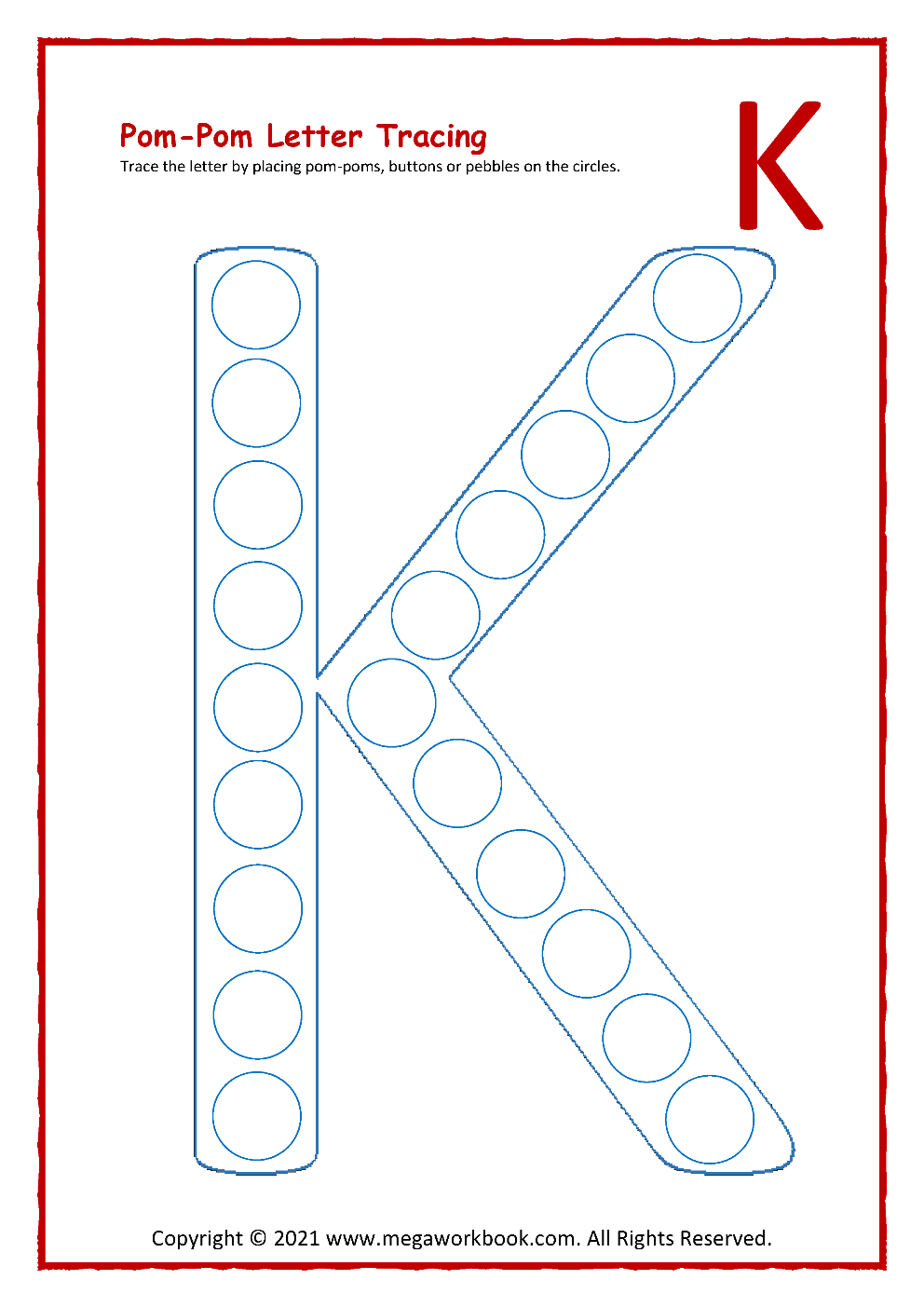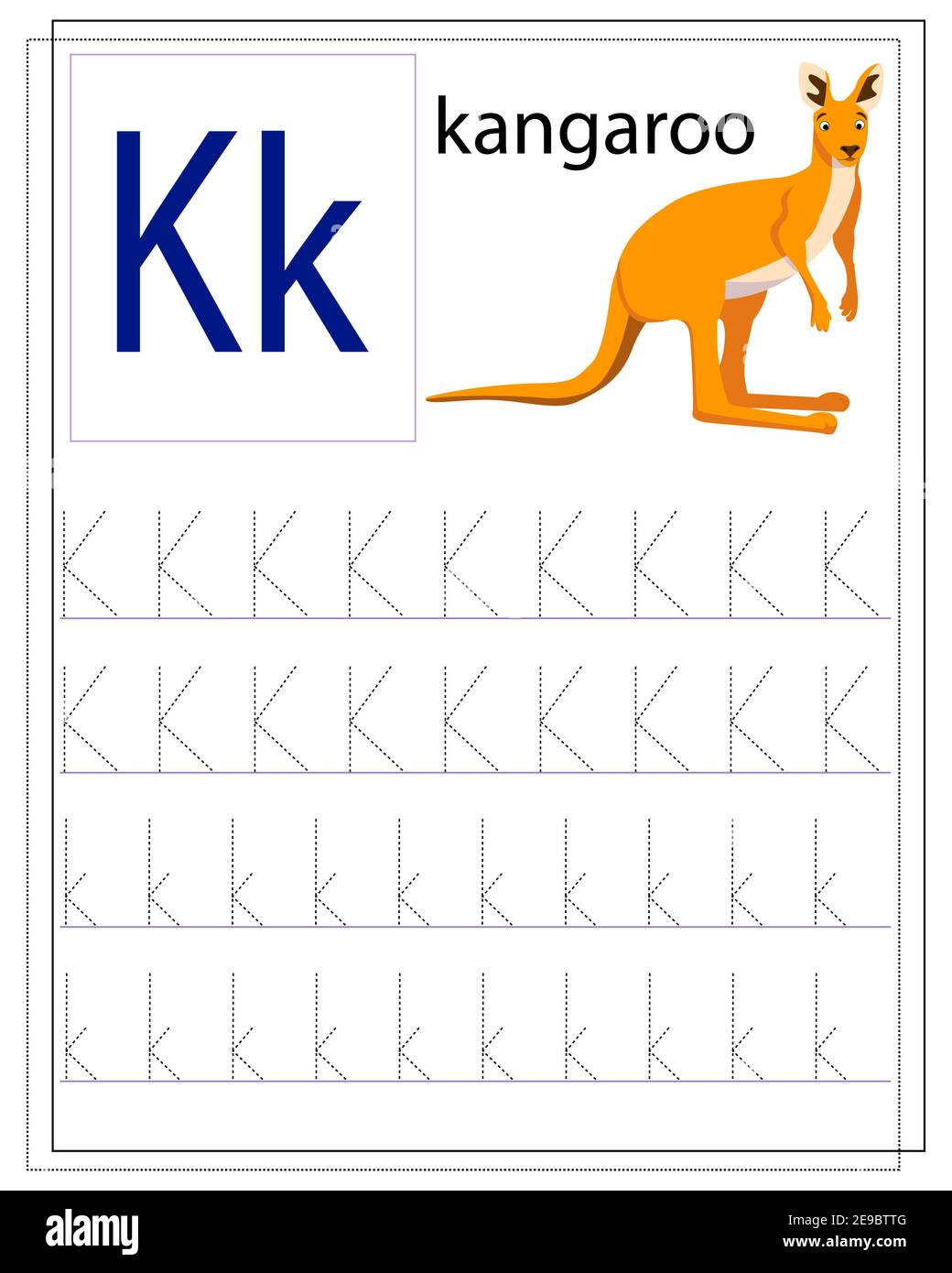Letter K Worksheets – Are you ready to commence on a thrilling adventure to explore the wonderful world of Letter K? Get ready to unlock the secrets of this fantastic alphabet letter with our exciting Letter K worksheets! Designed specifically for preschool and kindergarten students, these worksheets are packed with a variety of fun and engaging activities to help your little learner master the letter K in no time. From tracing exercises to phonics games, and from creative coloring to interactive puzzles, we’ll look into the amazing benefits of Letter K worksheets and discover how they can support the overall development of early literacy skills in young children.
Letter K Worksheets Printable
What Can You Expect from Exploring Letter K Worksheets?
The world of Letter K worksheets is a treasure trove of learning activities designed to help your little ones master the alphabet. As you explore into these worksheets, you’ll discover a variety of engaging exercises that cater to preschool and kindergarten students.
What activities are typically included in Letter K worksheets for preschool and kindergarten students?
For young learners, Letter K worksheets often feature a mix of fun activities, such as tracing, coloring, and matching games. These exercises are carefully crafted to help your child develop their fine motor skills, hand-eye coordination, and cognitive abilities.
How can Letter K worksheets help children differentiate between uppercase and lowercase K?
Worksheets focused on the letter K provide ample opportunities for your child to practice recognizing and writing both uppercase and lowercase K. This is crucial for developing strong literacy skills, as it helps your child understand the differences between these two forms.
Between the uppercase and lowercase K, there are distinct visual cues that your child will learn to identify. For instance, the uppercase K has a tall, vertical stem, while the lowercase k has a smaller, more curved shape. By repeatedly practicing writing and recognizing these letters, your child will become more confident in their ability to distinguish between them. This skill is crucial for reading and writing proficiency, as it enables your child to decode words accurately and write legibly.
What Does it Take to Achieve Tracing Excellence?
There’s no denying that tracing exercises play a vital role in improving handwriting skills, especially when it comes to Letter K worksheets.
What types of tracing exercises are effective for improving handwriting skills in Letter K worksheets?
You’ll find that the most effective tracing exercises for improving handwriting skills in Letter K worksheets typically involve:
- Guided tracing: where you trace the letter K with guidance from arrows or dotted lines
- Free tracing: where you trace the letter K without any guidance
- Tracing with different utensils: such as pencils, crayons, or markers to develop fine motor skills
- Tracing in different directions: such as tracing the letter K from top to bottom or left to right
- Tracing with varying line widths: to develop hand-eye coordination and fine motor control
| Type of Exercise | Description |
| Guided Tracing | Tracing the letter K with guidance from arrows or dotted lines |
| Free Tracing | Tracing the letter K without any guidance |
| Tracing with different utensils | Tracing the letter K with different utensils to develop fine motor skills |
| Tracing in different directions | Tracing the letter K in different directions to develop hand-eye coordination |
This variety of tracing exercises helps to develop muscle memory and improve handwriting skills.
How do tracing exercises benefit fine motor skills and hand-eye coordination?
Tracing exercises are an excellent way to develop fine motor skills, as they require precise movements of the fingers and hands.
Exercises that involve tracing the letter K help to improve hand-eye coordination by requiring you to focus on the letter shape while moving your hand to trace it.
By incorporating tracing exercises into your Letter K worksheets, you’ll be able to develop the necessary skills for writing and drawing, while also improving your overall dexterity and coordination.
How Can You Make Phonics Fun with Letter K Worksheets?
Some of the most engaging and effective ways to teach phonics involve making it fun and interactive. When considering Letter K worksheets, incorporating phonics exercises can be a great way to aid in sound recognition and pronunciation.
How do Letter K worksheets incorporate phonics exercises to aid in sound recognition and pronunciation?
Phonetically, Letter K worksheets often include exercises that focus on the /k/ sound, such as identifying words that start with the “k” sound, like “kite” or “kangaroo”. These exercises help develop phonemic awareness, which is the ability to recognize and manipulate individual sounds within words.
What phonics games and activities can be adapted for Letter K worksheets?
Letter-based scavenger hunts, where you search for objects around the room or at home that start with the “k” sound, can be a fun and interactive way to practice phonics skills. You can also adapt games like “I Spy” or “Sound Bingo” to focus on the /k/ sound.
This type of activity not only makes learning phonics fun, but it also helps reinforce sound recognition and builds confidence in your child’s ability to recognize and pronounce words correctly. By incorporating games and activities like these into your Letter K worksheets, you can create a engaging and effective learning experience for your child.
What’s in Store for You in the Creative Corner?
All the fun and creativity await you in this section! The Letter K worksheets are not just about tracing and writing, but also about unleashing your child’s inner artist.
What creative coloring and drawing activities are focused on the letter K in these worksheets?
For instance, your child might get to color a kite flying high in the sky, draw a kangaroo hopping across the page, or create a kingdom filled with kings and queens. These activities help your child associate the letter K with real-life objects and scenarios, making learning more engaging and memorable.
How can art projects enhance letter recognition and creativity?
One of the most significant benefits of art projects in Letter K worksheets is that they allow your child to think outside the box and explore different ways of representing the letter K.
Understanding how art projects can enhance letter recognition and creativity is crucial. By incorporating art activities, you can help your child develop their fine motor skills, hand-eye coordination, and critical thinking abilities. Most importantly, art projects make learning fun and interactive, reducing the likelihood of frustration and boredom. As your child creates and explores, they’ll develop a deeper understanding of the letter K and its various forms, ultimately leading to better recognition and retention.
How Can Letter K Worksheets Help Build Vocabulary?
To help your child develop a strong foundation in language and literacy, it’s crucial to introduce new vocabulary words in a fun and engaging way. Letter K worksheets can be a valuable tool in achieving this goal.
How can Letter K worksheets be used to expand a child’s vocabulary with words that start with K?
Any comprehensive Letter K worksheet will include a range of activities designed to introduce your child to new words that start with the letter K. These might include word searches, crossword puzzles, and matching games, all of which can help broaden your child’s vocabulary and improve their language skills.
What strategies can teachers use to introduce new vocabulary words in Letter K worksheets?
That’s a great question! Teachers can use a variety of strategies to introduce new vocabulary words in Letter K worksheets. For example, they might use visual aids like pictures or diagrams to help illustrate the meaning of new words, or real-life examples to make the learning more relatable and engaging.
Worksheets that incorporate these strategies can be particularly effective in helping your child learn and retain new vocabulary words. By using a combination of visual and interactive elements, you can create a learning experience that is both fun and challenging for your child. And, as they progress through the worksheet, they’ll develop a deeper understanding of the words and their meanings, which will boost their confidence and fluency in reading and writing.
What Makes Letter K Worksheets So Engaging and Fun?
Once again, the key to successful learning lies in making it enjoyable and interactive. This is where Letter K worksheets truly shine!
What interactive games or puzzles are commonly found in Letter K worksheets to make learning enjoyable?
Engaging activities like mazes, word searches, and matching games are commonly found in Letter K worksheets to make learning a delightful experience. These interactive elements encourage you to participate actively, making the learning process more enjoyable and effective.
How can technology be integrated into Letter K worksheets for interactive learning?
Interactive tools like digital whiteboards, educational apps, and online games can be seamlessly integrated into Letter K worksheets to create a more immersive learning experience. This fusion of technology and traditional worksheets enables you to learn in a more dynamic and engaging way.
A major advantage of incorporating technology into Letter K worksheets is that it allows you to learn at your own pace and revisit concepts as many times as you need. This personalized approach ensures that you grasp the material more effectively and builds your confidence in recognizing and writing the letter K. Moreover, interactive quizzes and assessments provide immediate feedback, helping you identify areas that require more practice. By leveraging technology, you can make the most out of your Letter K worksheets and develop a strong foundation in early literacy skills.
How Can You Support Your Child’s Learning at Home with Letter K Worksheets?
Keep in mind that home learning is an vital part of your child’s educational journey. With Letter K worksheets, you can reinforce their learning and make it a fun experience.
How can parents use Letter K worksheets at home to reinforce their child’s learning?
On a daily basis, you can use Letter K worksheets to supplement your child’s learning. Simply set aside a few minutes each day to practice tracing, coloring, and phonics exercises with your child. This consistent practice will help reinforce their learning and build confidence.
What tips can parents follow to make learning with Letter K worksheets fun and engaging?
Tips for making learning fun include using flashcards to create a scavenger hunt, creating a K-themed snack to associate with the letter, and incorporating music and movement to make learning more interactive. Any creative approach you take will surely make learning with Letter K worksheets an enjoyable experience for your child.
A great way to make learning with Letter K worksheets fun and engaging is to get creative! Try these ideas:
- Use stamps and stickers to decorate the worksheets and make them more visually appealing.
- Create a letter hunt around the house or backyard, where your child has to find objects that start with the letter K.
- Make a K-themed craft, such as a kite or a kangaroo, to associate with the letter.
- Any activity that incorporates your child’s interests and creativity will make learning with Letter K worksheets a fun experience.
How Can You Make the Most of Letter K Worksheets in Your Classroom?
Many educators are eager to explore innovative ways to incorporate Letter K worksheets into their teaching practices. By doing so, they can create engaging and interactive learning experiences that cater to diverse learning needs.
What strategies can teachers employ to integrate Letter K worksheets into their classroom activities?
Kicking off a lesson with a Letter K worksheet can be an excellent way to introduce new concepts, review previous material, or provide additional practice for struggling students. You can also use these worksheets as a springboard for discussions, group activities, or independent projects that promote critical thinking and creativity.
How can Letter K worksheets be adapted for different learning styles and abilities?
Learning is a highly individualized process, and Letter K worksheets can be modified to accommodate various learning styles and abilities. For instance, you can offer tracing exercises with different grip sizes or line widths for students with fine motor skill challenges.
Strategies such as providing visual aids, offering one-on-one support, or incorporating assistive technology can also help ensure that all students have equal opportunities to engage with the material. By doing so, you can create a more inclusive and supportive learning environment that fosters growth and confidence. Be mindful that, the key is to be flexible and willing to adjust your approach as needed to meet the unique needs of your students.
How Do Letter K Worksheets Contribute to Literacy Development?
Despite the abundance of educational resources available, Letter K worksheets remain a staple in many preschool and kindergarten classrooms. This is because they offer a unique opportunity to focus on specific skills that are vital for early literacy development.
How do Letter K worksheets support the overall development of early literacy skills in young children?
With their comprehensive approach, Letter K worksheets provide a solid foundation for future reading and writing abilities. By incorporating a range of activities, such as tracing, phonics, and vocabulary building, these worksheets help strengthen your child’s understanding of the alphabet and its relationship to spoken language.
What role do Letter K worksheets play in building a strong foundation for reading and writing?
Letter K worksheets play a vital role in establishing a strong foundation for reading and writing by introducing your child to the correct letter formation, sound recognition, and pronunciation. This, in turn, enables them to recognize and write the letter K with confidence, a crucial skill for future literacy success.
Role-playing exercises, such as tracing and coloring, help your child develop their fine motor skills, hand-eye coordination, and creativity, all of which are vital for writing and reading abilities. Moreover, phonics exercises and vocabulary building activities help your child make connections between sounds and letters, a fundamental aspect of reading and writing.
Can You Customize Your Letter K Worksheets?
In the world of learning, one size does not fit all. That’s why customization is key to making the most out of your Letter K worksheets!
How can Letter K worksheets be tailored to meet individual learning needs?
Personalization is the name of the game! You can tailor Letter K worksheets to meet your child’s unique learning style by adjusting the difficulty level, incorporating their interests, and using a variety of teaching methods.
What accommodations can be made for children with special needs or learning difficulties?
Learning should be accessible to all! You can modify Letter K worksheets to accommodate children with special needs or learning difficulties by using larger font sizes, high-contrast colors, and simple language.
Accommodations can also include audio or visual aids to help children with auditory or visual processing difficulties. Additionally, you can provide extra support such as one-on-one instruction or the use of assistive technology. By making these accommodations, you can ensure that every child has the opportunity to succeed.
How Can You Effectively Assess and Evaluate Student Progress with Letter K Worksheets?
Your assessment and evaluation of student progress are crucial in determining the effectiveness of Letter K worksheets in teaching young learners.
How can teachers assess student progress and understanding using Letter K worksheets?
The accuracy and completeness of tracing exercises, coloring activities, and phonics exercises can indicate a student’s understanding of the letter K.
What evaluation methods can be used to measure the effectiveness of Letter K worksheets?
Any comprehensive evaluation should consider factors such as improved handwriting skills, increased vocabulary, and enhanced phonetic awareness.
Worksheets can be evaluated based on their ability to engage students and foster a love for learning. Teachers can also observe students during activities and note their ability to recognize and write the letter K, as well as their confidence in using words that start with K. By considering these factors, teachers can refine their instructional strategies and create more effective Letter K worksheets.
What Tips and Tricks Can You Use to Get the Most Out of Letter K Worksheets?
After creating engaging Letter K worksheets, it’s crucial to know how to use them effectively in your teaching practices. Here are some valuable tips and tricks to help you get started:
- Make it fun: Incorporate games, puzzles, and interactive activities to keep your students engaged and motivated.
- Use visual aids: Incorporate pictures and images to help your students associate the letter K with its sound and meaning.
- Practice consistently: Encourage your students to practice their handwriting and phonics skills regularly to reinforce their learning.
- Be creative: Use different fonts, colors, and designs to make your worksheets visually appealing and fun to use.
After implementing these tips and tricks, you’ll be well on your way to creating an engaging and effective learning experience for your students.
What additional resources can teachers use to supplement Letter K worksheets?
Rich resources such as alphabet books, educational videos, and online learning platforms can provide additional support and reinforcement for your students’ learning.
How can teachers stay organized and manage Letter K worksheets in the classroom?
Letter K worksheets can quickly add up, so it’s crucial to have a system in place to keep them organized and easily accessible.
Plus, consider using folders or binders to store your worksheets, and label them by activity type or skill level. This will save you time and reduce stress when planning your lessons.
What Have You Learned from Your Letter K Adventure?
Taking this into account, you’ve now got a treasure trove of Letter K worksheets to help your little learners master this fabulous letter! From tracing and phonics to coloring and vocabulary building, you’ve seen how these worksheets can make learning a joyful journey. So, go ahead, grab those crayons and pencils, and get ready to watch your child’s literacy skills soar!
